Finding intimate details in the oldest desert in the world
Photographer Brooke Holm shot her new series of works in the Namib Sand Sea, the oldest desert in the world. Seemingly never-ending sand dunes stretch for over 3 million hectares in this UNESCO World Heritage Site, a unique ecosystem that survives mostly on condensation from the fog that rolls in off the coastline every morning. Namibia is one of the countries most vulnerable to climate change, and the first to write climate change policies into their constitution.


I traveled to Namibia to seek out the oldest desert in the world, the Namib Sand Sea. Here, vast and inhospitable stretches of sand dunes transform under the African sun in stunning gradients of red, brown and pink. The transientThe inti nature of the dunes ensures that what you see one day, will look different the next. The perspective from which the photographs are captured allows the landscapes to remain anonymous, while showing the most intimate details. At first glance, the photographs bear a resemblance to the human body, reminding me of our complicated relationship with nature and its magnetic pull on the human subconscious.
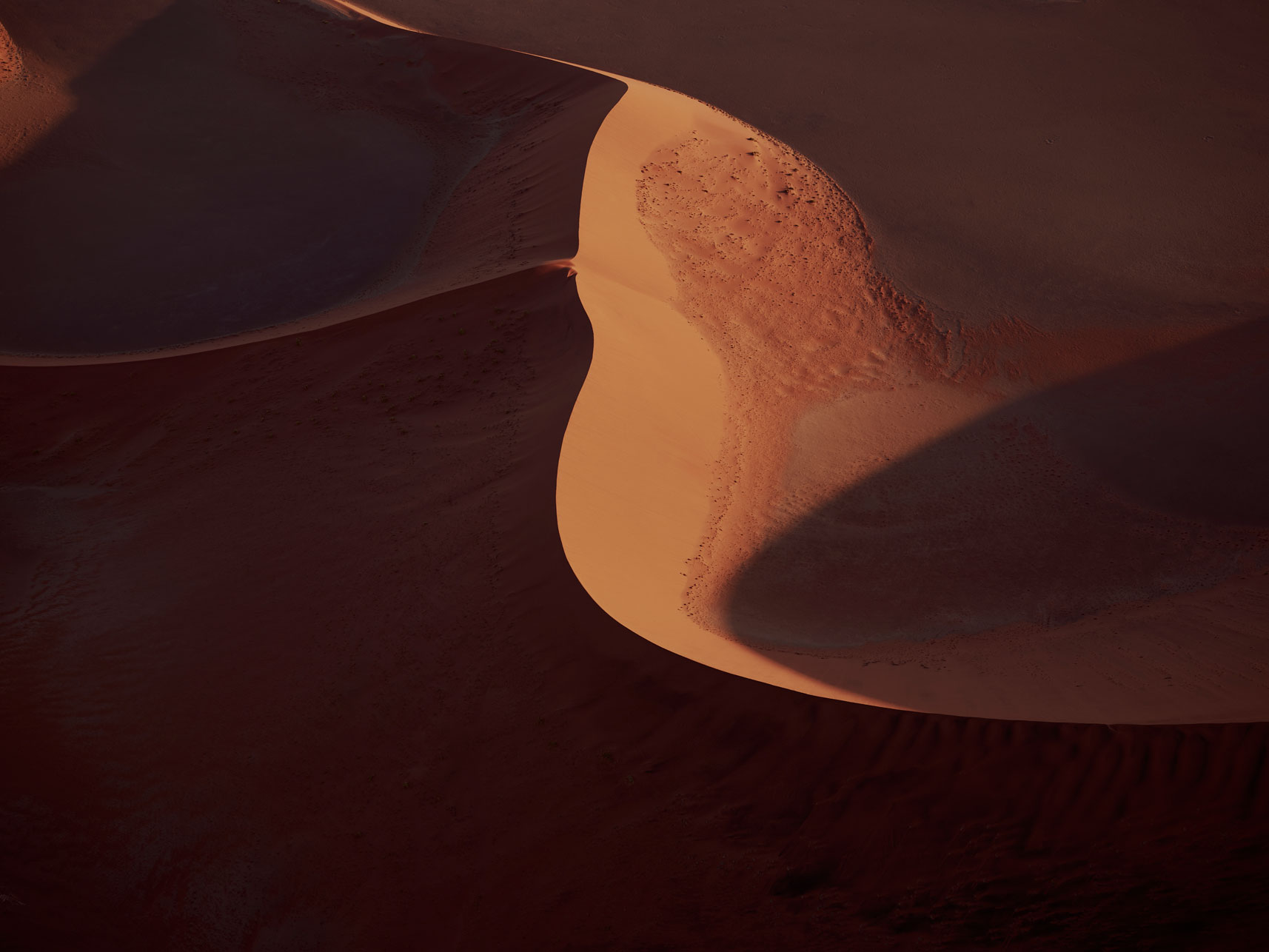
I had seen some satellite images before I left, from NASA and in Google Earth that showed the Namib Sand Sea, and more specifically, Sossusvlei. It looked unreal, so I started researching the area further. I found out that it was a national park, it was the oldest desert in the world, it had the largest sand dunes and that it was also home to a very dedicated climate change research facility, where scientists from all over the world study the unique ecosystem. It’s a UNESCO World Heritage site, and is also unique in that the main source of water for most lifeforms is the fog that rolls in over the coastline every morning. It is also one of the places on earth that is most vulnerable to the effects of climate change. I found out that Namibia was the first country in the world to write climate change policies into their constitution, which is inspiring to say the least.
All of this, besides the remarkable beauty of the place, was motivation for me to dive into it further.

I was there for under two weeks, driving around in a 4×4 from place to place. Long stretches of nothing (and everything) in between. Getting stuck in the sand and digging my way out, hiking up the tallest dune in the world, seeing all kinds of beautiful African animals in their natural habitat… I purposely wanted to photograph the Sand Sea from the air, so I organized that before arriving. Because the Namib Sand Sea is so incredibly vast (over 3 million hectares!) I didn’t have the luxury of scouting each place. I had to do all my research online first and come very prepared. I had a lens fail on me the first flight – which luckily I figured out.

Technically, this is my best work to date. But my personal evolution continues with every body of work I produce: I am learning new things every time – about nature, the world, people and what it means to contribute and have a say in the direction our planet is headed.
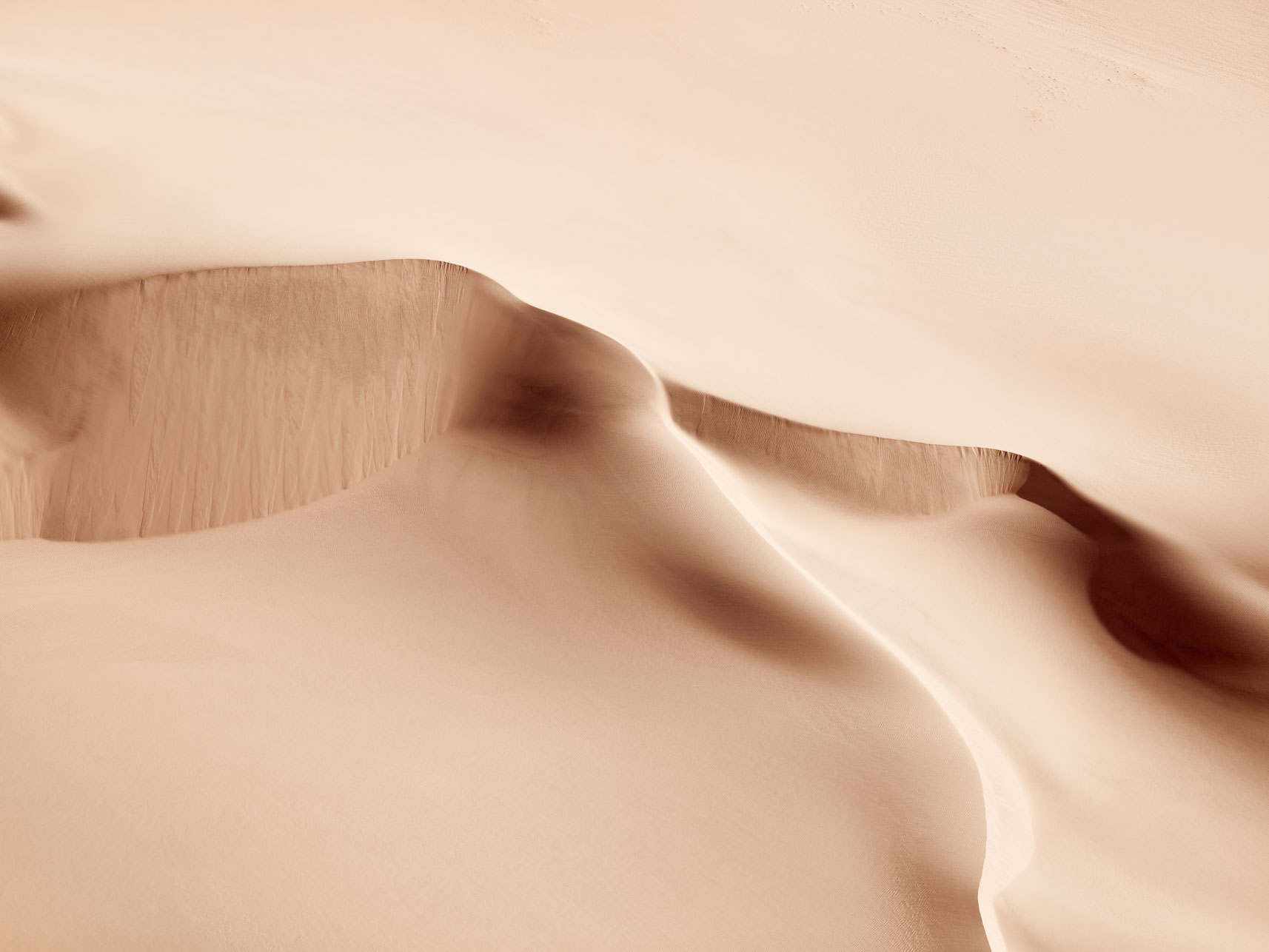
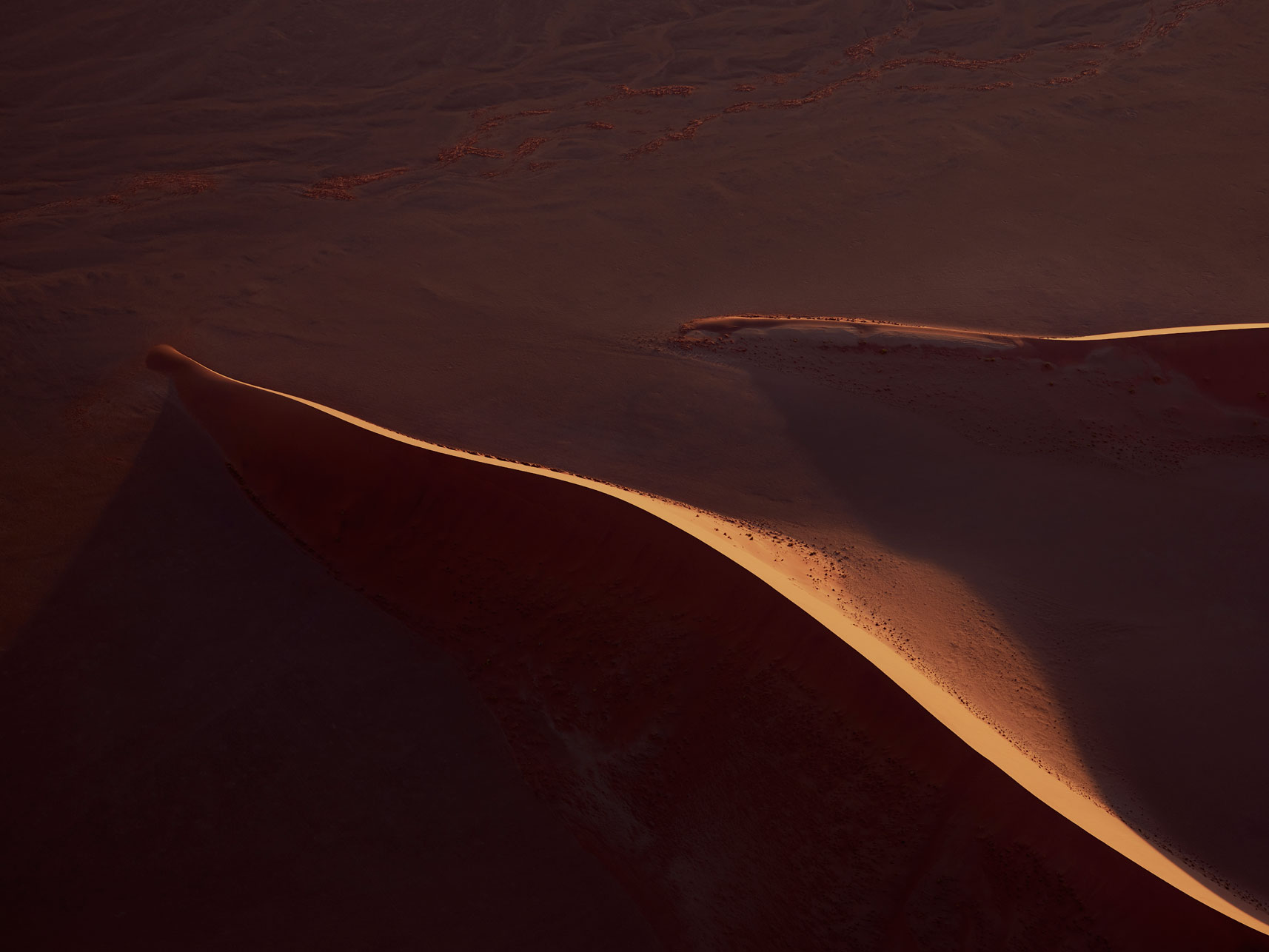
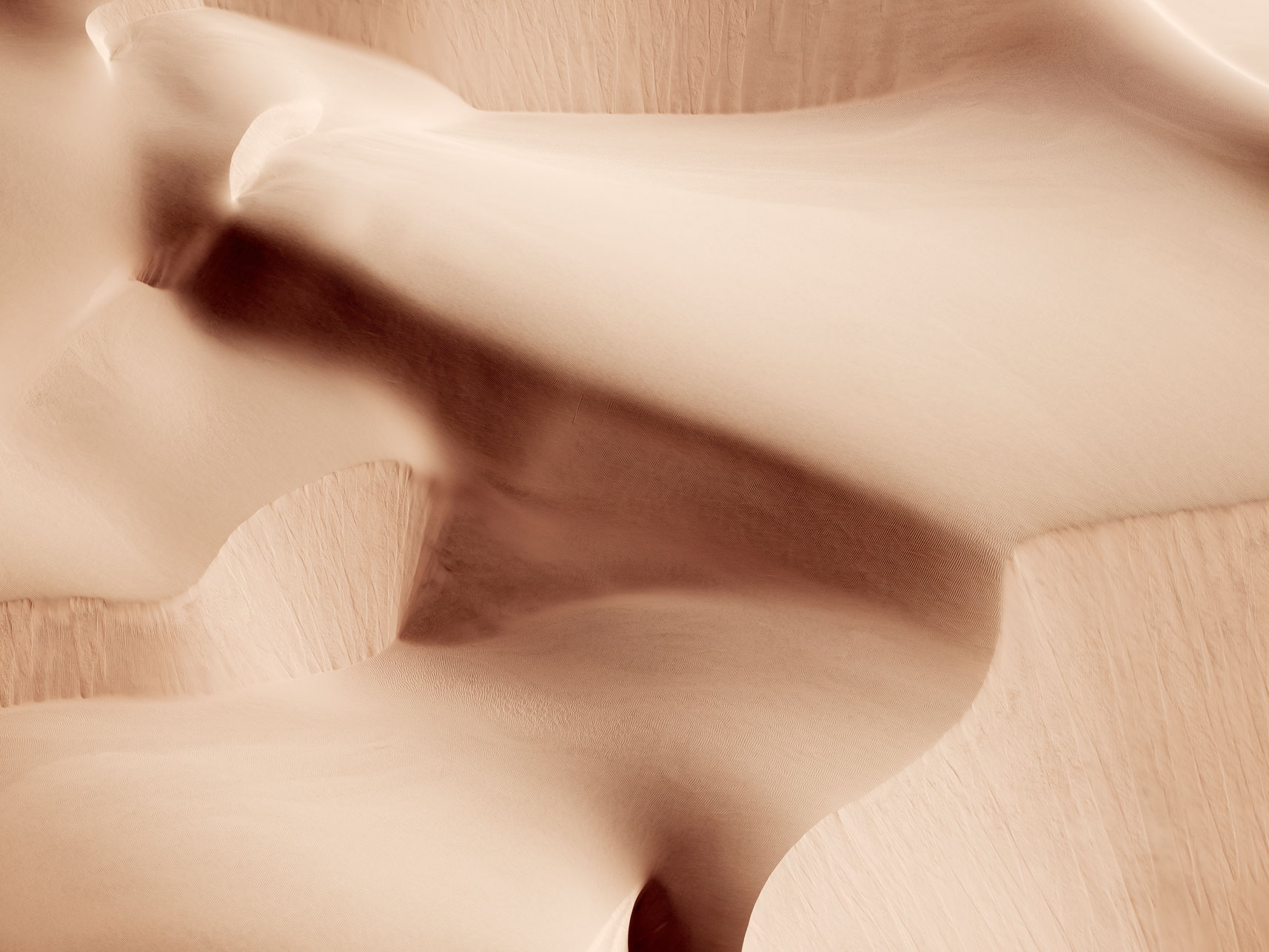
Namibia was special for me: I really connected with the land, and the people. Namibians are big on conservation, they care about the land and protect it. They don’t deny climate change, and treat nature as an equal, like we are part of each other. The rest of the world could learn a lot from them.
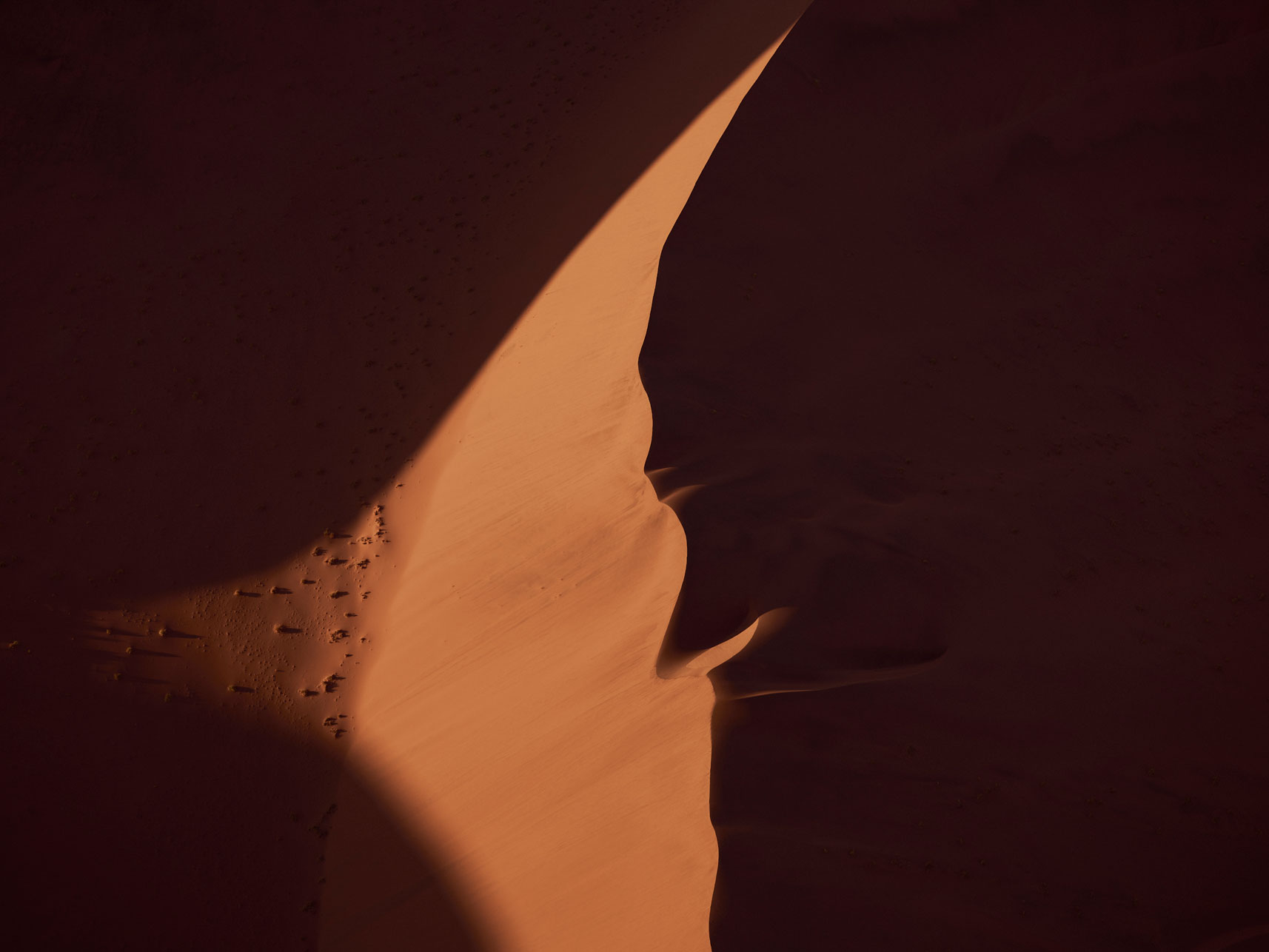
A warm thank you to Brooke, for letting us share these stunning images. Brooke Holm’s new exhibition Sand Sea opens Thursday 21 March at Modern Times gallery, 311 Smith St, Collingwood and runs until 31 March. Drop by to see these images in large format or head over to Brooke’s website for her other work: www.brookeholm.com.